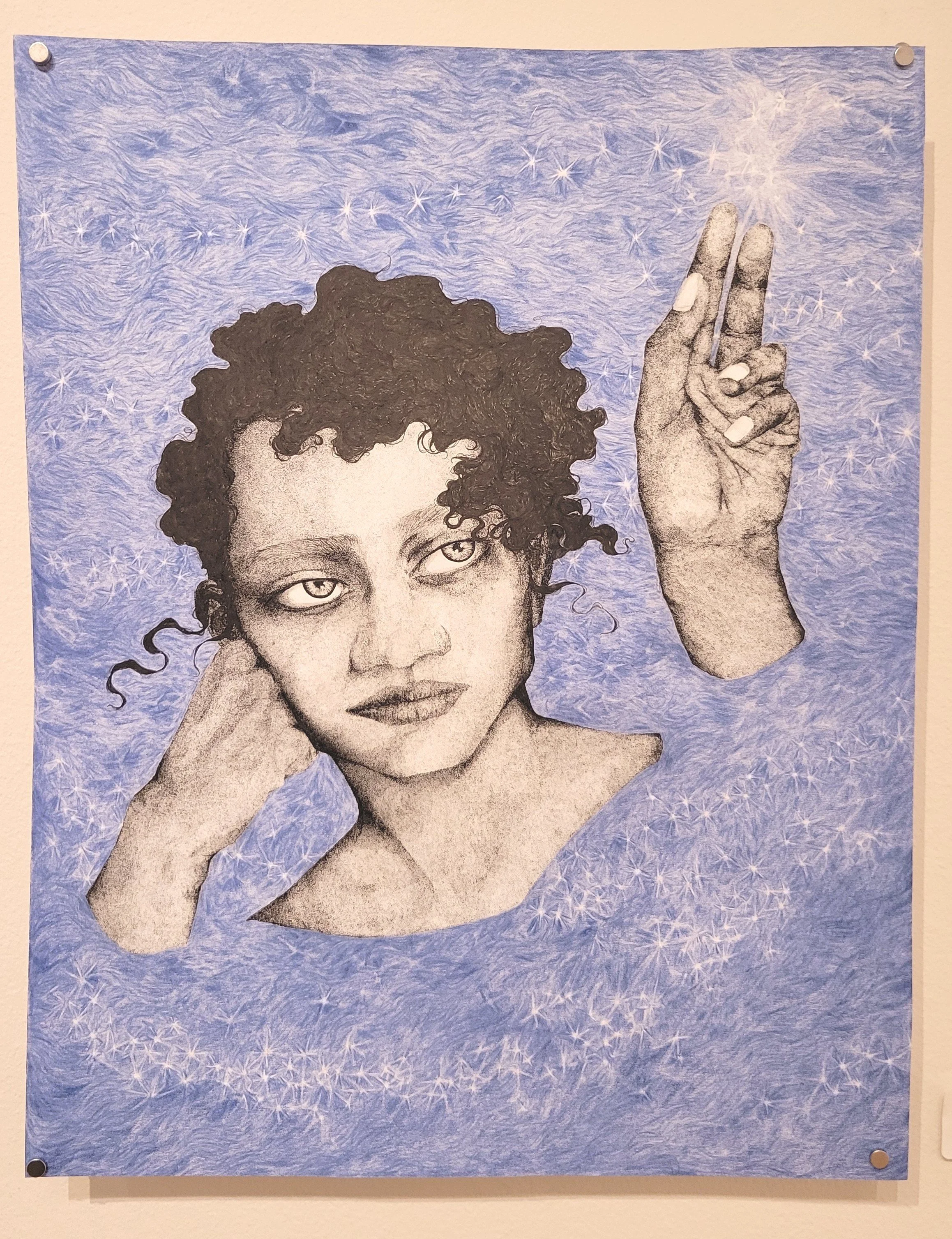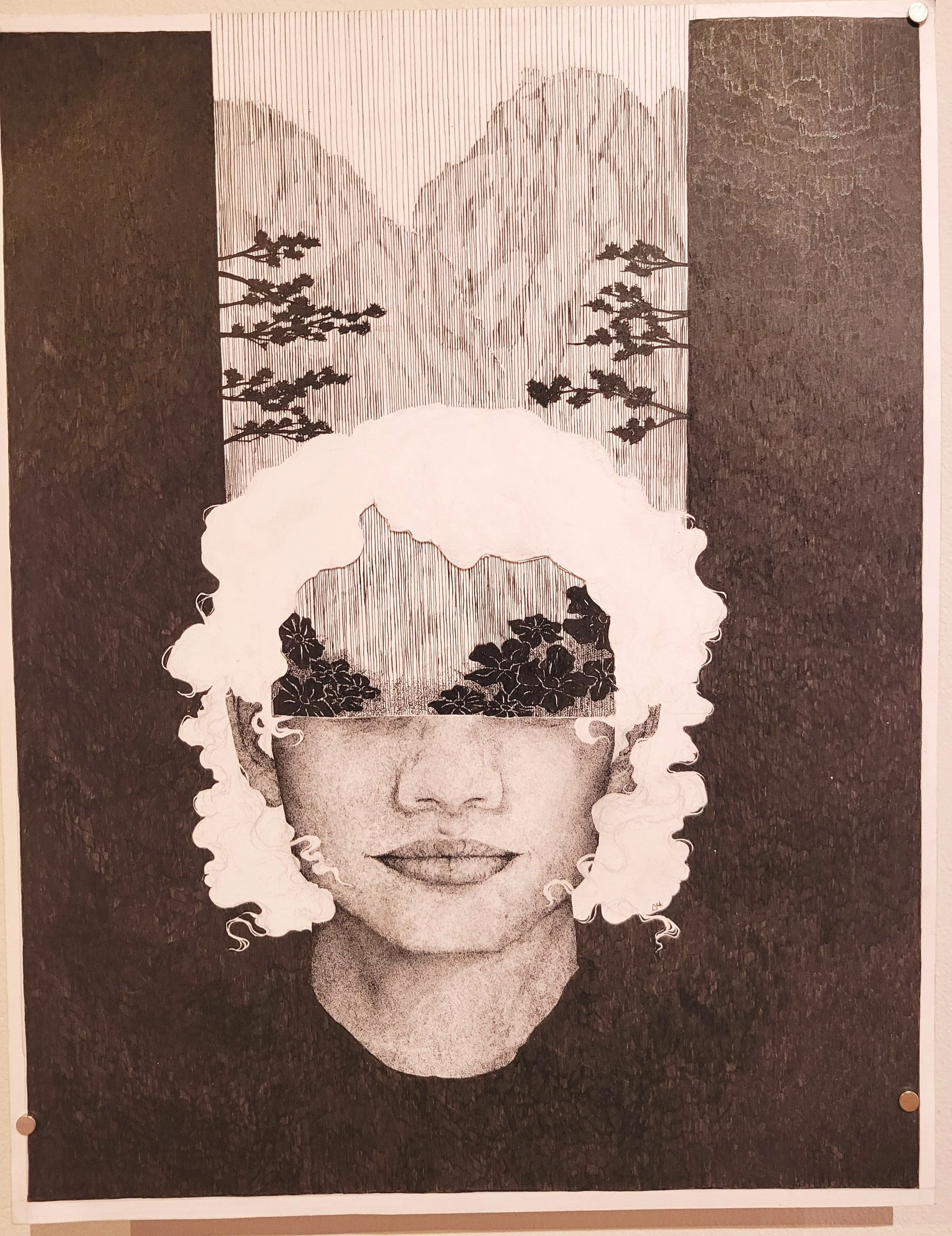“Of Sound Mind” Converts Audio to Visual Using Transcendental Illustrations
© Alison Auditore, Feel (Details)
With a name like Eye Lounge, you know the gallery has a deep commitment to the visual. For a quarter of a century, the gallery adorned its walls and placed on its pedestals all manner of media for your eyes to take in. Although installations, videos, audio recordings, and some forms of performance art have all brought in eclectic soundscaping and audio storytelling (not to mention the intrusion of cars’ subwoofers and the speakers of the neighboring beer garden), Alison Auditore invited music into the space in a way more traditionally aligned with the Eye Lounge ethos.
Auditore, which fatefully translates to “listener” in Italian, told me of how music puts her in an almost trance-like or transcendental state. Of Sound Mind, Auditore’s now-closing exhibition, is a visual testimony about music’s profound impact on the artist – to the synesthete’s delight. Her work gives shape to booming rhythms and flights of melody, intimately sharing what happens within herself when the music takes her.
From the artist’s statement: “Art and music both allow us to build worlds of our own that can be shared with others. They pave paths of reflection in ways that make them two of the most precious and intimate human experiences, even more so when they are used together.”
As a child who could listen to music for hours and imagine scenes both fantastical and mundane, it’s nice to be reminded that I am of sound mind.
What Does Music Look Like?
On pieces of sheet music, Auditore illustrates and collages Renaissance art, tropical flora, sleepy eyes, planetary and terrestrial maps, and more.
There’s an old concept that divides the chaotic and animalistic nature of humanity from the clear-cut logic of our so-called higher faculties. 19th-century writers, thinkers, and artists loved to talk about it, if you recall your high school English class. This duality was also applied to art and our experience of art. We can consider how our “higher faculties” – daydreams, memories, and other mental images – help us process and even amplify the music that moves us.
This isn’t a universal experience. In fact, a large section of the population can’t form mental images at all. But it is a helpful framework for approaching Auditore’s work. On the walls adjacent to her sheet music pieces, you can observe the technical proficiency of her portraits. Using stippling and scumbling to shade, give background, and define the textured hair of her subjects, all people of color, you can find that whirling chaos. But you can see it more acutely in the sharply defined eyes. Auditore draws eyes that pierce into you, that search the skies, that long to close, that scold. Other sharp details–faces, hands, landscape, color blocks, leaves, and news clippings–add a level of precision that binds tightly the otherwise turbulent forces, like capturing a spirit in a bottle.
© Alison Auditore, Je Suis
… And What Do We Look Like, Inside and Out?
© Alison Auditore, Dark
The dozen or so perched portraits bring the viewer closer to the artist’s meditations on human nature and the communities that nurture us. Music still drives the subject matter. The force behind Dark, a collage of article clippings covering topics from Jack the Ripper to desegregation, wealth inequality, and our nation’s foundation in a slave-based economy, is Kendrick Lamar’s “DNA.” Auditore mentioned to me specifically the lyric, “I got dark, I got evil, that rot inside my DNA.”
The classic Nature vs. Nurture argument is a major theme in Auditore’s project, bringing us back again to the 19th-century Romantics. In I Have Myself to Live For, the subject’s eyes are obfuscated by the continuation of the landscape behind them. The artist shared with me the inspiration behind it–a photo she saw of someone’s shadow where flowers were pleased to bloom in place of their eyes. Through the work, she thinks about the insidious shadows we all carry, and how, despite these, we are capable of not only Good, but also Loveliness–an insightful distinction the artist described with the analogy of children smiling and waving from a bus to pedestrians.
Tension as the Force of Life
The through-line of Of Sound Mind is the interplay of the chaos (in nature, in our animalistic basis, in our music) and the formulations that try to control the chaotic though energizing forces (in nurture, in our images, in our language). Auditore does well in demonstrating that these two poles are complementary, not at odds. Rhyme and meter structure music, creating harmony. The raw booming of the beer garden’s music pierces the walls of the gallery, a simple nuisance that reminds us of the living city beyond our neat walls. Policies and platforms channel passion into sustainable progress, while protests dislodge the laws and practices that oppress communities. The tension between raw energy and the structures it courses through animates our lives, our relationships, and our culture. Auditore’s sharp figures do not so much tame as they concentrate the nebulous whirling within their lines. Of Sound Mind gives form to the beautiful tumult of music and imagination.










